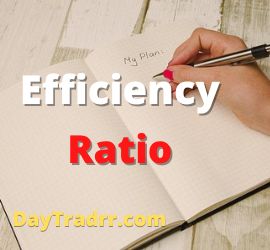What Is a Deferred Annuity?
 A deferred annuity is an insurance contract where savers contribute money and defer their income stream until later, usually upon retirement. The contract with an insurance firm is usually structured to pay the owner a regular income or a lump payment at some point in the future. Deferred annuities are frequently used by investors to supplement other retirement income, such as Social Security. A deferred annuity is different from an immediate annuity in that payments begin at a later date.
A deferred annuity is an insurance contract where savers contribute money and defer their income stream until later, usually upon retirement. The contract with an insurance firm is usually structured to pay the owner a regular income or a lump payment at some point in the future. Deferred annuities are frequently used by investors to supplement other retirement income, such as Social Security. A deferred annuity is different from an immediate annuity in that payments begin at a later date.
A deferred annuity is widely utilized in retirement to provide a consistent stream of income. Funding a deferred annuity can occur with a big one-time payment or in smaller amounts over months or years. Either way gives you flexibility and the chance for growth. Payments from a deferred annuity can begin any time from one year onward after opening it.
Deferred Annuity – A Closer Look
Deferred annuities are classified into three predominant types. They are fixed, indexed, and variable. Fixed annuities, as the name implies, give a set, guaranteed rate of return on the money in the account. Indexed annuities offer a return depending on the performance of a specific market index, such as the S&P 500. A variable annuity depends on the performance of a portfolio of mutual funds or sub-accounts. The specific mix is discretionary and chosen by the annuity owner.
Tax-deferred growth is available with all three types of deferred annuities. Owners of these insurance contracts only pay taxes when they withdraw, take a lump payment, or begin receiving income from the account. The money they extract is then taxed at their standard income tax rate. The accumulation phase or savings phase is the time when the investor is paying into the annuity. The payout or income phase begins after the investor elects to initiate receiving income. Many deferred annuities are designed to give income for the rest of the owner’s life. In certain cases, for the life of their spouse as well.
Deferred Annuity Types
The structure of the annuity influences how interest accrues during the accumulation phase. Thus, the optimal sort of annuity for you is determined by your investment objectives, strategy, and targets.
Fixed-rate
The insurer guarantees the minimum yield on a fixed annuity. The return on this sort of annuity may be lower than on others. However, the guaranteed minimum makes these investments suitable for those with a low-risk tolerance. This annuity does not provide inflation protection.
Variable-rate
Variable annuities, unlike fixed annuities, do not have a guaranteed minimum rate of return. Funds are invested in vehicles known as sub-accounts. They can include investments such as equities, bonds, and money market accounts. The return on investments with this sort of annuity is based on the success of the particular securities chosen. In other words, if they perform well, you can earn more than other forms of annuities pay. As a result, variable-rate annuities may be able to serve as a hedge against inflation. However, if the asset class performs poorly, variable annuity returns may be lower, or even negative.
Indexed rate
In terms of performance and predictability, an indexed annuity ranges between fixed and variable annuities. The performance is linked to a market index, like the S&P 500. This means that the better the index performs, the larger the returns. As a result, indexed rate annuities can also be used as an inflation hedge. Indexed annuities offer a minimum guaranteed rate as well as a maximum rate of return. As a result, investors can earn a higher return than fixed annuities offer. At the same time, while risking a lower potential loss than with a variable annuity.
Deferred Annuity Advantages
A deferred annuity can provide various benefits to a retiree, some of which are common to all annuities. These benefits include:
- Tax advantages – A deferred annuity, like all annuities, allows a saver to accumulate money in a tax-advantaged account. An annuity allows for tax-free savings. Earnings in the account are not taxed until they are redeemed. Furthermore, if contributions to the account use after-tax dollars, such contributions will result in no additional income tax liability.
- Unlimited contributions – There is no contribution limit to the account. This is the case with all annuities. This can be a big benefit for higher-income individuals who may have maxed out their regular 401(k) – which provides similar tax-deferral benefits – but still want to defer taxes on investment gains.
- Flexible benefits – Annuities can be structured to offer a variety of payout characteristics. For example, survivor benefits, death benefits, a guaranteed minimum lifetime payout, and others. All of this is factored into the annuity’s price.
- Time is money – A deferred annuity offers your money more time to compound. In turn, this increases the payout one can realize when the time comes to start withdrawing money. In general, the longer the deferral, the bigger the payout can be.
Deferred Annuity Disadvantages
Deferred annuities should be viewed as long-term investments. They are considerably less liquid than, say, mutual funds acquired separately from an annuity. Most annuity contracts have tight withdrawal limits, such as allowing only one per year. The insurance may also levy surrender fees for withdrawals. Furthermore, if the account holder is under the age of 59 and-a-half, they will normally suffer a 10% tax penalty on the amount of the withdrawal. This is in addition to the income tax they must pay on the withdrawal.
Despite its benefits, a deferred annuity has some obvious downsides, some of which are significant. These disadvantages are as follows:
- Complexity – An annuity contract can be lengthy and complicated. Many critical elements can be tucked away in the fine print.
- Fees – The fees associated with annuities can be high. Particularly, the sales commission which can easily reach 6 or 7 percent. However, some annuities may incur additional expenses. Pay strict attention to the fine print.
- Liquidity – Getting money out of an annuity early might be difficult, if not impossible. Canceling a contract may likely incur stiff fees, such as a surrender fee.
- Tax Penalties – You may lose the tax-deferred benefits of an annuity and potentially face a bonus penalty if you take your money before the age of 59 1/2.
Additional tax on early distributions
To discourage the use of retirement funds for purposes other than normal retirement, the law imposes a 10% additional tax on certain early distributions from certain retirement plans. The additional tax is equal to 10% of the portion of the distribution that’s included in gross income. Generally, early distributions are those you receive from a qualified retirement plan or deferred annuity contract before reaching age 59½. Distributions from a qualified retirement plan are subject to federal income tax withholding; however, if your distribution is subject to the 10% additional tax, your withholding may not be enough. You may have to make estimated tax payments. For more information on withholding and estimated tax payments, refer to Publication 505, Tax Withholding, and Estimated Tax. (Source: irs.gov)
Deferred Annuity – Final Words
Buyers should ensure they have enough money in a liquid emergency fund before acquiring an annuity. Prospective buyers should also be aware that, when compared to other types of retirement investments, annuities can have hefty fees. Fees might also vary greatly between insurance companies, so it pays to look around. Finally, death benefits are frequently included in delayed annuities. If the owner passes away while the annuity is still in the accumulation period, their heirs may be entitled to some or all of the account’s value. However, once the annuity has entered the payout phase, the insurer may simply keep the remaining funds unless the contract includes a provision to continue paying benefits to the owner’s heirs for a specified period of years.
Up Next: What is an Efficiency Ratio?
 An efficiency ratio is a financial metric that measures a company’s internal ability to effectively manage its assets and liabilities. There are a number of ratios used in corporate finance to assess a company’s or financial institution’s operational efficiency. Ultimately, these ratios assess a company’s capacity to manage its assets and gauge how efficiently it uses its assets to produce revenue. With any financial ratio, it’s best to compare a company’s ratio to its competitors in the same industry.
An efficiency ratio is a financial metric that measures a company’s internal ability to effectively manage its assets and liabilities. There are a number of ratios used in corporate finance to assess a company’s or financial institution’s operational efficiency. Ultimately, these ratios assess a company’s capacity to manage its assets and gauge how efficiently it uses its assets to produce revenue. With any financial ratio, it’s best to compare a company’s ratio to its competitors in the same industry.
Financial ratios and metrics are used to provide insight into a company’s management and financial health. For example, there are ratios to calculate receivables turnover, liability payback, equity amount and usage, and general inventory and machinery use. These metrics can also be used to measure and analyze commercial and investment bank performance. Ultimately, efficiency ratios are useful for a company’s management in evaluating business operations. Furthermore, investors and lenders employ ratios to do financial analysis on organizations. It helps them to determine whether they are good investments or creditworthy borrowers.




